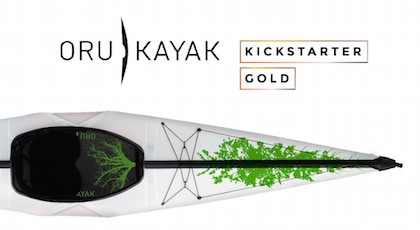Recently on the unofficial KickstarterForum.org, a user asked:
“Out of curiosity, if somebody backed any project on Kickstarter, they are a “backing-minded” person. That said, are there existing channels to tap into past backers of any project on Kickstarter?
Seeing as Kickstarter recently hit the $1 billion dollar mark in terms of dollars pledged. I think this is an important question to address. Is there a “backer” community on Kickstarter and if so, how can you reach it?
On March 3, 2014, Kickstarter passed $1 billion in pledges. That’s $1,000,000,000 pledged by 5.7 million people to creative projects. More than half was pledged in the last 12 months alone.
1,689,979 people have backed more than one project. 5,932 people have backed more than 50 projects.
29.64% of the overall backer community has backed more than one project.
0.10% of the overall backer community has backed more than 50 projects.
Interestingly, 62% of all money pledged has been contributed by returning backers.
In 2013 alone, $480 million was pledged by 3 million people on Kickstarter.
800,000+ backed more than 1 project. 80,000 that backed more than 10.
2.6% of the community of backers backed more than 10 projects in 2013.
26.6% of the backer community backed more than 1 project in 2013.
10% of the backer community that backed more than 1 project backed more than 10 projects.
The two graphs I’ve made are not exactly comparing apples to apples, as the all time backer graph shows “backed more than 50 projects” and the 2013 graph shows “backed more than 10 projects.”
What does this mean?
 To me, that means the majority of backers are either: personal connections, one-time backers that hear about a project through a blog, a website, or someone they know (could be someone they don’t physically know in person, but have consumed their music or read their articles).
To me, that means the majority of backers are either: personal connections, one-time backers that hear about a project through a blog, a website, or someone they know (could be someone they don’t physically know in person, but have consumed their music or read their articles).
Kickstarter gave the statistic that “62% of all money pledged has been contributed by returning backers,” which initially seems to indicate that returning backers pledge more money than the average backer, but without further information, it could be misleading.
For example, if backer A pledge $5 to 9 projects ($45 total pledges), and backers B, C, and D each pledged $5 to a project ($15 total pledges), and then don’t return to the website, this would yield $60 in total pledges.
25% of the backer community would have backed more than 1 project.
75% of total dollars pledged would have come from this repeat backer.
However that repeat backer never pledged more than $5 to each project, as the other backers did.
In my experience, most new Kickstarter project creators view the typical backer as what was really only 2.6% of the backer community in 2013 – people who have backed more than 10 campaigns. This is not a website where it’s the norm that strangers will throw money at projects and new endeavors are magically funded!
It’s important to understand that yes, there is a community on the platform that enjoys supporting creative endeavors, but you should plan to involve your own social network and create a strategic marketing plan to engage potential new backers.
Yes, for some projects, the creator makes their page and strangers pledge 80% of the funds, but this is not the norm.
Hope for serendipity and a good product-market fit, but don’t plan for it. Plan to hustle and get the word out yourself.
How can you engage the backer community?
To return to the question at the beginning of this article – if there was such a channel or email list that contained people who have backed campaigns in the past, you can bet every creator on Kickstarter would be bombarding these high-volume backers with pitches and that money plead requests would filter in from other platforms also.
This is not a good scenario.
In this case, you would be 1 of 1,000 and a high frequency backer would be more likely to just tune out any new emails related to Kickstarter, thus destroying the value of being able to contact them.
This leads me to conclude that the best way long-term for creators to introduce a new project to enthusiastic backers is to reach them through the mediums they consume, not directly via a pitch email (a least for backers – not talking about blogs or influencers here).
2 Indirect Ways of Getting in Front of Potential Backers
Blogs and News Outlets
5 Low Budget PR Tips for your Crowdfunding Campaign
What blogs should you reach out to regarding your Indiegogo or Kickstarter campaign?
10 Essential PR Tips for Startups
Social Media
Kickstarter Social Media Marketing Tips From Guy Kawasaki
6 Tools to Automate Twitter and Social Marketing For Your Kickstarter Campaign
The Beginner’s Guide to Social Media
Conclusion
What do you think about my analysis of the Kickstarter backing community? Am I off (math was never my strong suit!). Do you agree? Disagree? What have you found to be the best way to engage the Kickstarter backer community? Leave a comment below!







